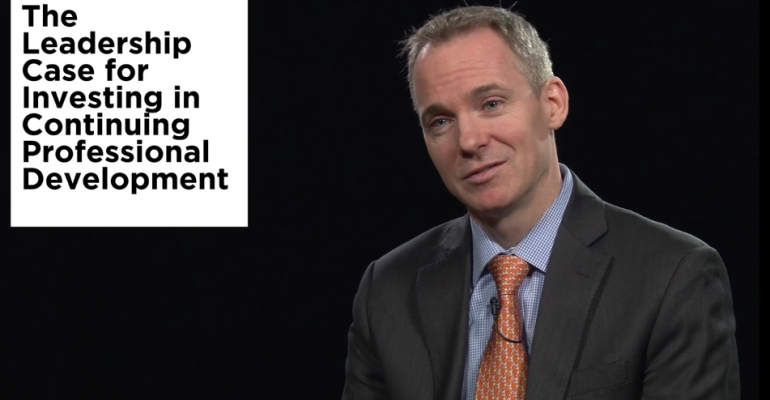Yes, today’s healthcare environment is fraught with challenges in quality, safety, professionalism, and team communication, in addition to clinical issues. But these are all things that an empowered continuing medical education program can help resolve, says Accreditation Council for CME President and CEO Graham McMahon, MD, MMSc, in a recent commentary in Academic Medicine.
CME is “an underused and low-cost solution that can improve clinical performance, nurture effective collaborative teams, create meaning at work, and reduce burnout,” McMahon writes. To optimize the benefits of education, clinical leaders need to think of CME as a vehicle that can help drive change and achieve institutional goals, in concert with quality improvement efforts, patient safety, and other systems changes.
In a video accompanying the article, he says, “Our healthcare leaders need to understand that their most precious resource is their human capital. And if they want to address the patient needs in their community, the quality of care being delivered [and] the cost effectiveness of that care, then they have to embrace and nurture that human capital” by giving clinicians the engaged environments, active learning, and skill development they now demand.
“That’s a different expectation of the community, and we have to evolve to meet those expectations,” he says in the video.
“If you can nurture and deliver those experiences for them, you’ll … be able to improve their skill, provide better care, deliver better health, lower costs, lower errors, [provide] better patient safety [and a] higher quality of care, and create teamwork in your environment.”
Healthcare leaders need to look at CME not as something that clinicians want to avoid, but as something that they embrace because it has meaning for them, he says. And they need to stop thinking of CME professionals as those who work alone in “a dark basement rubber-stamping applications for credit. That’s not what a CME professional is. A CME professional has to be out there working with healthcare leadership, working with the [quality improvement] professionals, listening to learners to create an engaged environment and to help transform that culture to one that’s positive, that’s supportive, that nourishes and leverages the power of education to make a difference,” he says in the video.
“Healthcare leaders who recognize the strategic value of education can expect a meaningful return on their investment—not only in terms of the quality and safety of their clinicians’ work but also in the spirit and cohesiveness of the clinicians who work at the institution,” McMahon writes in the commentary’s conclusion.





